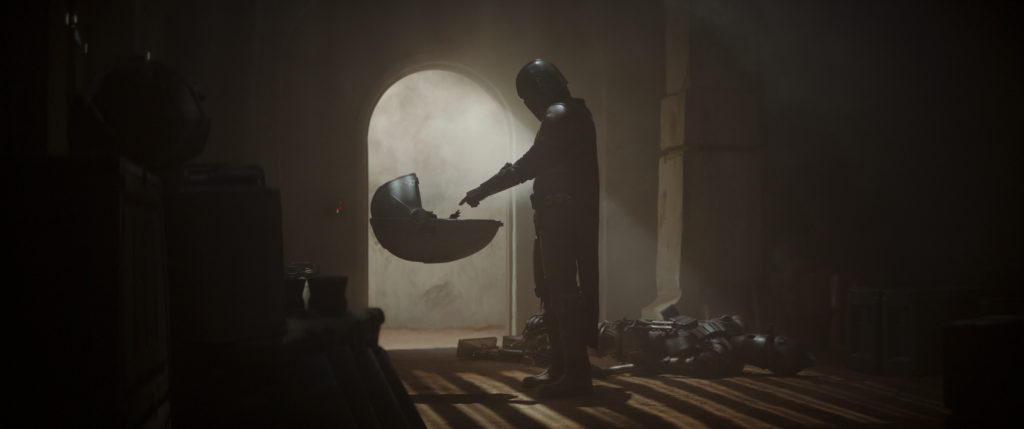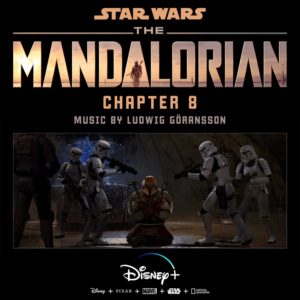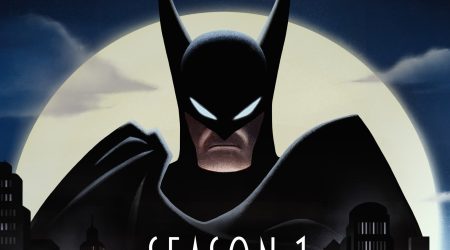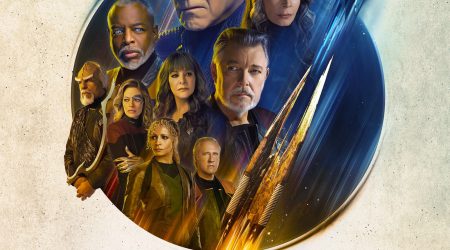For my next review during this period of staying home and not being able to visit a movie theater, I would like to write about a score that is not new, but still recent. At the end of 2019, I was simply too busy to write about the music from the latest Star Wars live-action show The Mandalorian by Oscar-winning composer Ludwig Göransson, and now is a perfect time to do so. The Mandalorian is a television series that airs exclusively on Disney+ and it tells the story of a mysterious Mandalorian warrior. With a show set in the Star Wars universe, you would expect a score with a specific orchestral style, just like the ones John Williams has written during the last four decades, but knowing what Göransson has created during his career, you are never sure.

The way this music was released is quite unusual. After each episode had aired, Disney would immediately digitally release the music for it. The first season consists of 8 episodes, so-called chapters, resulting in eight digital albums. For this review we take a look at The Mandalorian: Chapter 1 in more detail, give some quick thoughts on the other seven chapters and finish the review with my conclusion about the music for this show.
Chapter 1

The main reasons why I want to discuss this series of albums are the main themes, which can be heard in the last track of this album, titled “The Mandalorian.” The first main theme can be heard at the start with a simple musical pattern performed on a bass recorder (the wooden flute) with a lot of reverb. Other recorders with a higher pitch join in, resulting in a unique and intriguing sound. I have the impression that the simple recorder sounds are used to portray the man under the helmet, who, according to the Mandalorian rules in the show, is only allowed to remove it when he’s alone. Since other people like to call him “Mando,” I will call this gorgeous and intriguing melody the Mando theme. Right after the first second of this track, I knew that Göransson had gone for a totally different style than the orchestral style Williams has used over the many decades and that other composers liked to mimic in their Star Wars movies, games or television shows
After the brilliant start with the Mando theme in “The Mandalorian,” a heartbeat-like pulse starts together with a kind of an electric sounding howl and a guitar, as an introduction to the orchestral middle part playing on top of the beat. The orchestral part is superb and sounds very heroic, with the main focus on the brass. This part represents the warrior lifestyle of the Mandalorian people. You can hear the heroism, the power and the strength in this part of the theme, which I will be naming the Mandalorians theme from here on. The Mando theme also makes a brief return in this part, until the brass starts to play some sort of fantastic victory fanfare. The recorders from the Mando theme conclude the track by playing over the pulse together with electric guitars and other instruments.
The Mando and the Mandalorians themes are the foundation for the music of the first season, and will probably continue in the next seasons as well. The Mando theme can be heard, for example, in “Hey Mando!” and “Face to Face,” while in “Hammer Time” you hear a particularly magnificent version, played by the orchestra on a fantastic foundation of percussion.
In “You Are A Mandalorian” you can not only hear a full-blown orchestral version of the Mandalorians theme, but the Mando theme is integrated into it as well, played by the violins as a counter melody, suggesting to the audience that the man and the Mandalorian warrior are the same. The one last track from the first chapter I would like to mention is “Bounty Droid,” which starts off with heavy electronics, percussion and a fast pulse, before the orchestra begins to play long powerful chords over it, working to an amazing orchestral finale.
Chapter 1 tracklist with highlights
The highlights are in bold.
- Hey Mando! (2:13)
- Face To Face (5:12)
- Back For Beskar (2:25)
- Hammertime (2:17)
- Blurg Attack (1:25)
- You Are A Mandalorian (3:55)
- Bounty Droid (3:02)
- The Asset (1:35)
- The Mandalorian (3:18)
Chapter 2-8

The music for the other chapters also relies on the fantastic main themes. They bring out the similarities between the chapters, while each chapter has its own separate story to tell as well. Each one introduces new environments and characters, which all need their own music, making each album stand apart from the others.
If you are interested in some highlights, here are a couple of recommendations. In Chapter 2 you can listen to “Jawas Attack,” for example, which is a fun-sounding and melodic piece of battle music that is being played while Mando has to deal with these (in)famous creatures from the Star Wars universe. In my opinion, the track “Training the Plebs” from Chapter 4 has a brilliant title, but the music is also a pleasure to listen to. The woodwinds of the orchestra are allowed to shine before the full orchestral finale of this track begins. In “Mando Says Goodbye” from the same chapter, you hear a beautiful, emotional and orchestral version of the Mandalorians theme. The music in “The Gang” from Chapter 6, also stood out to me. On the base of an electronic pattern, you can hear some very interesting violin play. Finally, the last track I would like to mention is “The Mandalorian – Orchestral Version” from Chapter 7, which is another amazing blend of both themes, performed only by an orchestra without any other instruments.
Conclusion
What I had heard about the music after The Mandalorian came out, was that many people liked it, but also that a lot of people did not. The reason for the dislike is mainly because it is not the traditional orchestral Star Wars music, but more like mysterious ambient music belonging to a futuristic Western. The Mandalorian is exactly that, and to me, the music really fits the show. One of the challenges for this series is that the main character’s face is not visible. A face can show emotion extremely well and you can clearly see if a person is sad, having a fun time, is happy, and so on. With a helmet on you do not have that information, and the music has to fill that gap, which Göransson did perfectly.
Star Wars is a very rich world with many impressive stories that can be told in many different ways, including all kinds of different musical styles. I think the future of the Star Wars franchise looks very bright. In addition to looking forward to the music for Season 2 of The Mandalorian, I am also very curious about what is in store for us music-wise in the next years with all the new Star Wars movies, television series, and games coming out. I am expecting many fresh, versatile and amazing scores, just like the one Ludwig Göransson has written for The Mandalorian.
Listen or buy
Chapter 1: Amazon.com, Apple Music, Spotify and Streamingsoundtrack.com
Chapter 2: Amazon.com, Apple Music, Spotify and Streamingsoundtrack.com
Chapter 3: Amazon.com, Apple Music, Spotify and Streamingsoundtrack.com
Chapter 4: Amazon.com, Apple Music, Spotify and Streamingsoundtrack.com
Chapter 5: Amazon.com, Apple Music, Spotify and Streamingsoundtrack.com
Chapter 6: Amazon.com, Apple Music, Spotify and Streamingsoundtrack.com
Chapter 7: Amazon.com, Apple Music, Spotify and Streamingsoundtrack.com
Chapter 8: Amazon.com, Apple Music, Spotify and Streamingsoundtrack.com
Total duration of all albums: 3 hours and 15 minutes
Walt Disney Records (2019)




